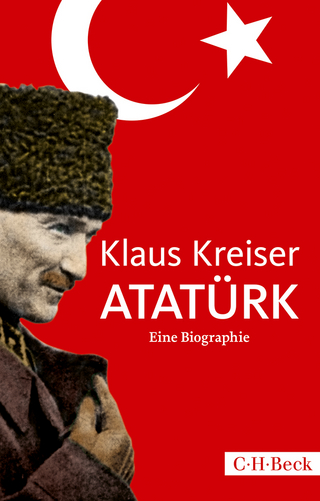
The Great Air Race
Glory, Tragedy, and the Dawn of American Aviation
Seiten
2023
WW Norton & Co (Verlag)
978-1-324-09407-4 (ISBN)
WW Norton & Co (Verlag)
978-1-324-09407-4 (ISBN)
The untold, almost unbelievable, story of the daring pilots who risked their lives in an unprecedented air race in 1919—and put American aviation on the map.
Years before Charles Lindbergh’s flight from New York to Paris electrified the nation, a group of daredevil pilots, most of them veterans of the World War I, brought aviation to the masses by competing in the sensational transcontinental air race of 1919. The contest awakened Americans to the practical possibilities of flight, yet despite its significance, it has until now been all but forgotten.
In The Great Air Race, journalist and amateur pilot John Lancaster finally reclaims this landmark event and the unheralded aviators who competed to be the fastest man in America. His thrilling chronicle opens with the race’s impresario, Brigadier General Billy Mitchell, who believed the nation’s future was in the skies. Mitchell’s contest—critics called it a stunt—was a risky undertaking, given that the DH-4s and Fokkers the contestants flew were almost comically ill-suited for long-distance travel: engines caught fire in flight; crude flight instruments were of little help in clouds and fog; and the brakeless planes were prone to nosing over on landing.
Yet the aviators possessed an almost inhuman disregard for their own safety, braving blizzards and mechanical failure as they landed in remote cornfields or at the edges of cliffs. Among the most talented were Belvin “The Flying Parson” Maynard, whose dog, Trixie, shared the rear cockpit with his mechanic, and John Donaldson, a war hero who twice escaped German imprisonment. Jockeying reporters made much of their rivalries, and the crowds along the race’s route exploded, with everyday Americans eager to catch their first glimpse of airplanes and the mythic “birdmen” who flew them.
The race was a test of endurance that many pilots didn’t finish: some dropped out from sheer exhaustion, while others, betrayed by their engines or their instincts, perished. For all its tragedy, Lancaster argues, the race galvanized the nation to embrace the technology of flight. A thrilling tale of men and their machines, The Great Air Race offers a new origin point for commercial aviation in the United States, even as it greatly expands our pantheon of aviation heroes.
Years before Charles Lindbergh’s flight from New York to Paris electrified the nation, a group of daredevil pilots, most of them veterans of the World War I, brought aviation to the masses by competing in the sensational transcontinental air race of 1919. The contest awakened Americans to the practical possibilities of flight, yet despite its significance, it has until now been all but forgotten.
In The Great Air Race, journalist and amateur pilot John Lancaster finally reclaims this landmark event and the unheralded aviators who competed to be the fastest man in America. His thrilling chronicle opens with the race’s impresario, Brigadier General Billy Mitchell, who believed the nation’s future was in the skies. Mitchell’s contest—critics called it a stunt—was a risky undertaking, given that the DH-4s and Fokkers the contestants flew were almost comically ill-suited for long-distance travel: engines caught fire in flight; crude flight instruments were of little help in clouds and fog; and the brakeless planes were prone to nosing over on landing.
Yet the aviators possessed an almost inhuman disregard for their own safety, braving blizzards and mechanical failure as they landed in remote cornfields or at the edges of cliffs. Among the most talented were Belvin “The Flying Parson” Maynard, whose dog, Trixie, shared the rear cockpit with his mechanic, and John Donaldson, a war hero who twice escaped German imprisonment. Jockeying reporters made much of their rivalries, and the crowds along the race’s route exploded, with everyday Americans eager to catch their first glimpse of airplanes and the mythic “birdmen” who flew them.
The race was a test of endurance that many pilots didn’t finish: some dropped out from sheer exhaustion, while others, betrayed by their engines or their instincts, perished. For all its tragedy, Lancaster argues, the race galvanized the nation to embrace the technology of flight. A thrilling tale of men and their machines, The Great Air Race offers a new origin point for commercial aviation in the United States, even as it greatly expands our pantheon of aviation heroes.
John Lancaster is a journalist who spent most of his career at the Washington Post, including eight years as a foreign correspondent. His writing has also appeared in National Geographic and the New Republic, among other publications. He lives in Washington, DC.
| Erscheinungsdatum | 31.10.2023 |
|---|---|
| Zusatzinfo | 8 pages of black-and-white illustrations and 10 images throughout |
| Verlagsort | New York |
| Sprache | englisch |
| Maße | 140 x 211 mm |
| Gewicht | 295 g |
| Themenwelt | Literatur ► Biografien / Erfahrungsberichte |
| Sachbuch/Ratgeber ► Geschichte / Politik | |
| Geisteswissenschaften ► Geschichte ► Regional- / Ländergeschichte | |
| Sozialwissenschaften ► Politik / Verwaltung | |
| ISBN-10 | 1-324-09407-9 / 1324094079 |
| ISBN-13 | 978-1-324-09407-4 / 9781324094074 |
| Zustand | Neuware |
| Haben Sie eine Frage zum Produkt? |
Mehr entdecken
aus dem Bereich
aus dem Bereich
Erinnerungen
Buch | Softcover (2024)
Pantheon (Verlag)
16,00 €


